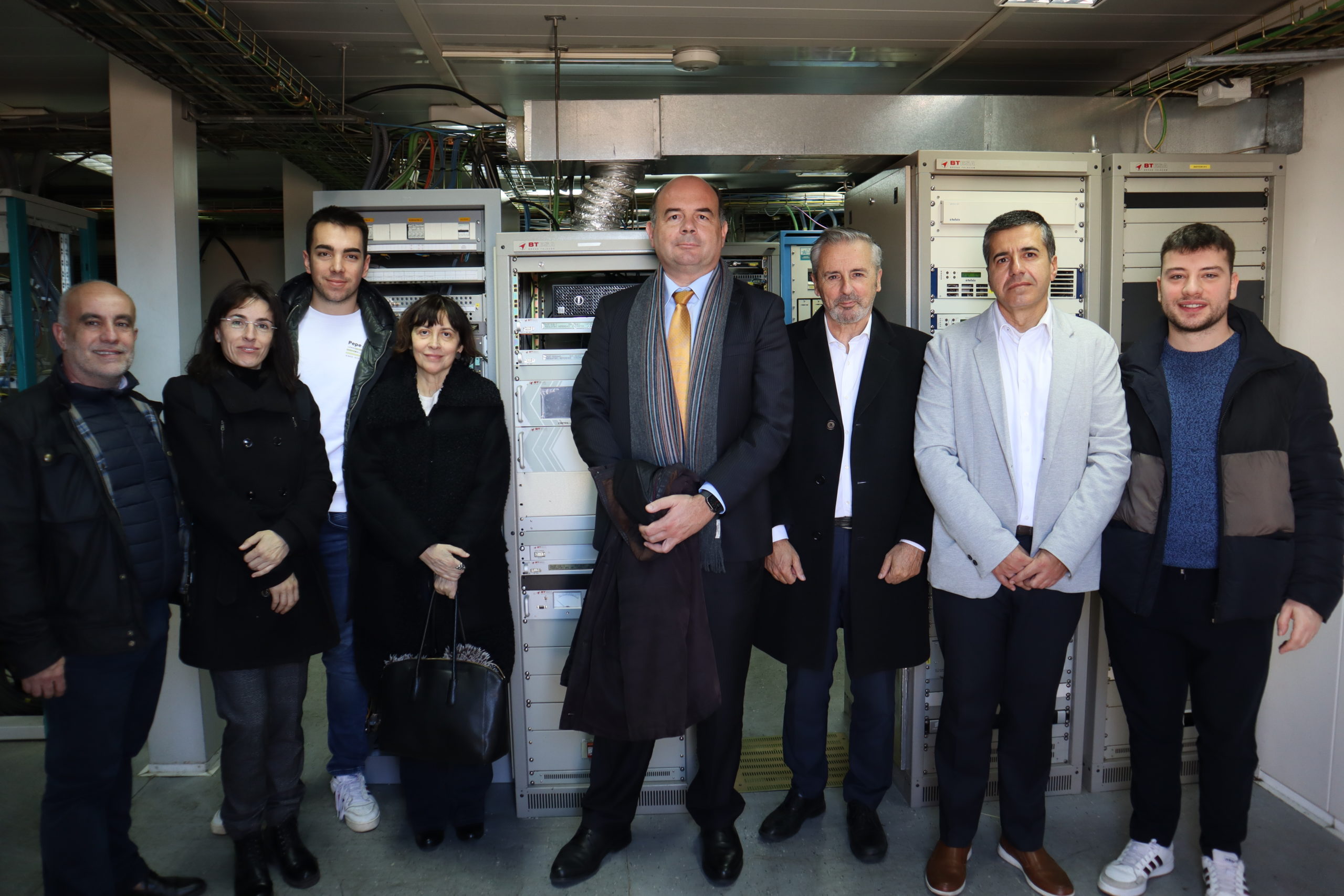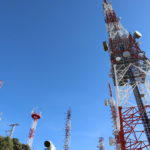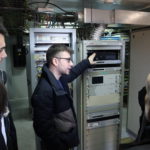The 5G pilot in Castilla La-Mancha has finished with the last demonstration of a digital terrestrial television transmission using the 5G Broadcast standard. The MCG (Mobile Communications Group) has implemented and validated an open-source compatible modulator, using software-defined radio equipment.
5G Castilla-La Mancha pilot Project
At the beginning of 2023, the 5G pilot in Castilla La-Mancha came to its end. It is a project of the public business entity Red.Es, framed in the national 5G plan and national plan for smart territories promoted by the Ministry of Economic Affairs and Digital Transformation and co-financed by the European Regional Development Fund.
The main point of the pilot projects is to promote 5G technology for its early implementation and testing process so its characteristics and capabilities could be known to promote the mobile telecommunications industry development between operators, providers and final users. More precisely, the 5G pilot of Castilla-La Mancha is formed by three different use cases: content distribution, augmented reality in mobile emergency units and home automation integration and sensors for an intelligence hotel.
The iTEAM Mobile Communications Group has carried out the use case Distribution of audiovisual content through eMBMS (evolved Multimedia Broadcast & Multicast) and feMBMS (further evolved Multimedia Broadcast & Multicast) also known as LTE-Based 5G Broadcast, 5G specific for the broadcasting of content on digital terrestrial television networks.
Among its objectives is to experiment with 5G technology, learn about its capabilities and the different network configurations and services that it allows depending on the required deployments and uses, learn about the coverage provided by the technology, performance, and its possible use in different frequency bands available for the broadcasting of audiovisual content.
Telefónica, Broad Telecom SA (BTESA), Watchity and RTVE set up the partners group that carried out the content distribution through 5G network.
Distribution of audiovisual content through eMBMS and feMBMS
The objective of this use case has focused on exploring the technical capabilities of 5G for the broadcast of traditional multimedia content using the LTE-Based 5G Broadcast standard in the current terrestrial broadcasting network.
To do this, the content is produced at the location of the news or event being covered, sent through 5G mobile networks to the cloud, and processed in real time, to finally be sent to the DTT transmission centre and distributed as a 5G Broadcast signal. This technology allows the reception of multimedia content on all compatible mobile devices, which are currently on the market.
This requires the use of compatible equipment and since the presence of commercial 5G Broadcast equipment available is practically inexistant, the mobile communications group has developed a 5G Broadcast solution for the execution of the use case using software-defined radio equipment for the implementation of a modulator in the TELECOM CLM broadcast center and a receiver capable of decoding the transmitted signal. In addition, RaptorQ codes have been used, an encoding against errors to improve the reception of mobile content, known as AL-FEC (Application Layer Forward Error Correction) from the BitRipple company.
With the final demonstration, all the development carried out in the pilot by iTEAM is concluded, showing the innovations and tools developed in its execution. It has consisted of two parts:
- In the first one through static reception, the multimedia content has been received in the traditional way through a UHF antenna, emitted from the DTT broadcasting center located in Cerro de Palos. The broadcast received at the TelecomCLM offices was a live broadcast from the courts of Castilla-La Mancha (Toledo), generated by RTVE.
- The second part consisted of the reception in mobility. The Toledo 23 (TO-23) highway, which connects the city with the Santa María de Bequerencia industrial estate where TelecomCLM is located, was chosen to make the journey of about 10 minutes at speeds between 60-80 km/h. The reception in the direct vision sections allowed to test the capacity of the system in mobility.
Equipment and software architecture
The 5G Broadcast transmitter was housed in a BTESA company cabinet, located in the Cerro de Palos broadcast center, with the following components:
- 5G Broadcast modulator (according to the 3GPP Rel-16 specifications). Made up of the SDR team, the software that generates the 5G Broadcast signal and the computer where it runs. The modulator is a software development carried out by the UPV (Polytechnic University of Valencia), which runs on a TelecomCLM PC and implements the AL-FEC error correction encoder with RaptorQ codes.
- SDR USRP B210. It converts the base digital signal generated by the modulator into the radio frequency signal to be radiated.
- BTESA DVB-T2 driver in bypass to correct non-linear distortions produced by the amplification stage.
- Amplification stage. Two cascaded amplifiers of 250W each, provide a power of 500W (BTESA).
On the other hand, the 5G Broadcast receiver is made up of:
- PC that houses the software implementation of the 5G Broadcast demodulator, connected to the SDR USRP B210 equipment.
- Application layer error correction decoder with RaptorQ codes.
Results
From the tests, the reception could be evaluated for the two reception scenarios described. In fixed reception, the decoding of the content did not present errors, since the signal level is high and the signal-to-noise ratio is more than sufficient to guarantee error-free reception.
In the mobility reception test, due to the Doppler effect and the rest of the degradations present in the signal, the decoding of the content is more complex. The results obtained show the robustness of the system against mobility, since the decoded content for a sufficient power level at speeds of about 60 km/h. These results show that mobility is not a problem in the use of 5G Broadcast. The receiver sensitivity obtained, that is, the minimum power level necessary for error-free decoding, is –78 dBm in static, and –72 dBm in mobility.
Conclusions
The tests and demonstrations have served to record compliance with the objectives pursued by this use case. It has been possible to experience the capabilities of 5G, demonstrate its feasibility and the possibilities offered to the sector of terrestrial broadcasting of multimedia content implemented in a pioneering way in Spain with a solution of these characteristics. This solution serves as a sample of the technology for the different agents of the industry.
The contribution of iTEAM (UPV) in this project has not only been based on the preparation of the pilot, but also on the creation of value thanks to the development of the SDR 5G Broadcast transmitter and receiver. This represents an innovation at the national level, since until now there was no platform for radio equipment defined by open-source software in accordance with the 5G Broadcast standard. This fact brings with it an advance in development and research in the field, which places Spain and the Polytechnic University of Valencia as pioneers in the software implementation of mobile communications standards.
The final demonstration of the TelecomCLM use case carried out in the city of Toledo shows the good results of all the work carried out throughout the project. These reflect all the development by iTEAM researchers in the 5G Broadcast solution, and its performance together with BTESA’s amplifier stage and TelecomCLM’s high power transmitter.
The project has been completed in this final demonstration, which shows the feasibility of 5G and 5G Broadcast technology for the production and distribution of television content as a successor to current broadcasting standards.



